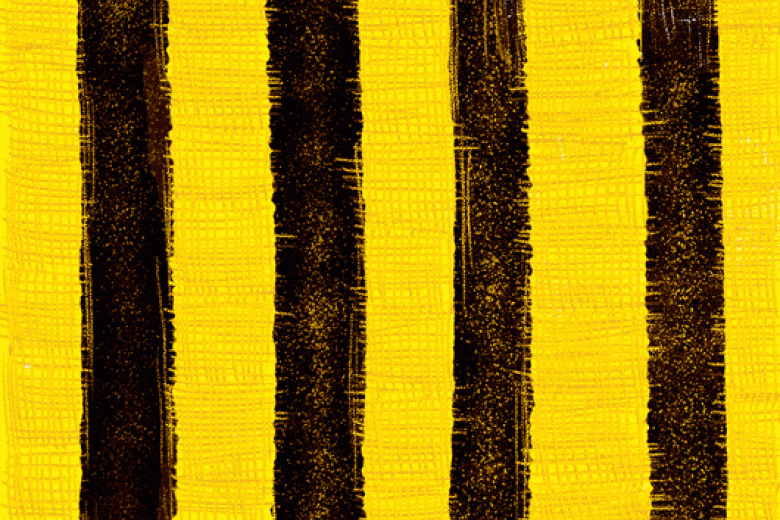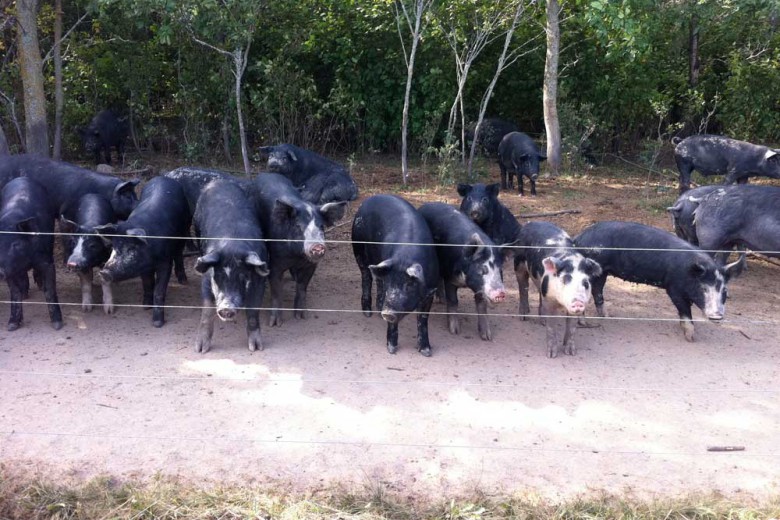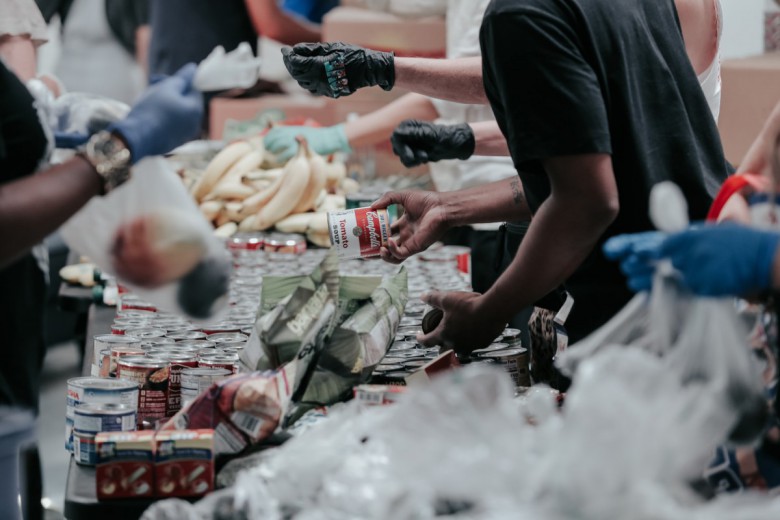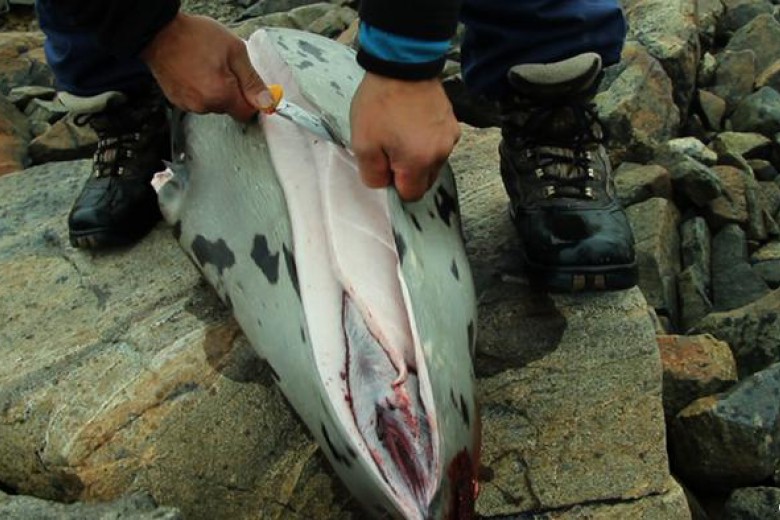_1000_665_90.jpg)
Before we talk, we eat.
Aurelia has laid out lunch on the long skinny table. She’s prepared dishes that give homage to maíz, corn – the food that defines Mayan-Mam cultural heritage of the Comitancillo highlands of northwestern Guatemala.
There’s sopa de res y maíz, beef and corn soup, and heavy maíz tamales steaming hot from inside banana leaves. There are corn tortillas and a pot of red pinto beans and several halved squash revealing their green and yellow flesh. And lining the four walls of her home, under her low wooden ceiling, there are hundreds of cobs of corn, dried and tied along a rope.
It’s Aurelia’s lifeline, and the food that will sustain her during the coming months of drought and dust. It’s a kind of beautiful home décor, and somewhat surprising for a North American accustomed to yellow monocrop corn all her life to see the true shades of the Mam’s maíz: golden as a late afternoon sun, red as a fire sun, purple-pink as the sky before the sun goes down, and purple that drains into indigo when dusk is swallowed by the night.
Aurelia’s face is all smile and her eyes get lost in a roadmap of wrinkles and folds of skin. She’s full of shy laughter. Her hupil, the traditional blouse she wove on the loom, is alive with turquoise, turtle green, and mustard yellow colours. She’s embroidered on her wide-shouldered blouse a set of quetzal birds that have long, feathered tails.
“Que ríco,” I murmur to Aurelia in between mouthfuls of hot, salty soup, drawing out the –_íco_ and loving the fact that there’s an expression in Spanish for describing both the taste of her soup, and the steep, rolling farmland that marks her Indigenous land.
How rich.
Indeed, Aurelia is rich on Mayan-Mam culture. She’s a proud woman, fierce in her conviction against capitalism, and a century of colonialism and genocide that’s attempted to uproot the identity of the Indigenous Mam people. She’s rich on a history of struggle, on her mother tongue that’s fast disappearing, and the tradition of weaving red, black and yellow yarns on the loom into distinctive patterns, patterns of resistance, that define Mam culture of the Comitancillo highlands.
La Resistencia lives in the Mam, yesterday and today, as they struggle to survive and preserve their roots as small-scale and subsistence farmers.
Aurelia is a campesina, a woman farmer. She never married, so she farms alone.
Her culture taught her to plant The Three Sisters – maíz, beans and squash – together on plots of slanted land. Maíz stands firm in the soil and supports the winding, climbing growth of beans. Beans give birth to nitrogen and bless the earth with fertility. Squash shoot out green arms, covered in leaves, forming a protective green carpet.
In Mam culture, maíz is never grown alone.
Instead, the fields of monocrop maíz belong to the gringos. To Aurelia, they plant imported seeds, ideas, and theories that demand everything from the earth. In the fields of monocrop maíz, synthetic fertilizers replace nitrogen-fixing beans, the wandering arms of squash are cut off at the wrists, and an integrated family of crops is severed by a system of greed.
The gringo’s maíz is yellow as jaundice. It’s a threat to Aurelia and other women farmers of Comitancillo. Markets are saturated with competition from larger-scale farms, which have abandoned cultural techniques for planting high-yield GMO varieties and spraying pesticides that wipe out organismal life in the fields and soil.
These farms employ a majority of farmers who are men with monetary output on their minds. They have forgotten about their cultural seed – maíz of a thousand shades and flavors. Gradually, more Mam farmers are selling all their maíz for cash, for their ticket to ‘develop’ according to the gringo’s standards, and in turn, buy maíz back on the market.
But recent global food production trends have accelerated the price of corn in Comitancillo by 300 per cent meaning many families can’t afford the crop that feeds their physical cultural and existence. Mam farmers are losing control of who they are, and who they once were.
Aurelia is worried that the colours of her Indigenous maíz will one day fade away into the monochrome world of the GMO varieties, and she’ll stop seeing colour altogether.
“Cultivamos para vivir,” Aurelia says.
She’s no longer smiling.
We plant to live.
_1000_665_90.jpg)
*
The last time I saw Judith was three years ago. She was standing on edge of the steep river embankment, a small figure against a backdrop of green – an enormity of green that had coloured the details of her rainforest home for over thirty-five years.
She was waving goodbye. The engine of my boat gurgled in the water and rolled into a steady, sloppy hum against the river’s current.
I wasn’t certain if I’d ever see her again. I cast back a silent prayer to shore, hoping that it would somehow reach and protect her against the changing seasons to come.
They would come, we knew.
Judith was a Miskito Indigenous woman and a farmer.
She lived in the BOSAWAS Rainforest, the second largest expanse of rainforest in the Americas, a tract spanning 25,000 square kilometers of trees that shot up out of the earth with incredulous force – the trunks thick as elephants, the branches forming an impenetrable tangle that lifted up an abundance of fur and feathered life.
Judith lived below the branches, in the understory, and at the edges of the rainforest, where her husband, Mateo slashed small plots of forest with his machete, and she and their children planted yucca, or cassava, beans and maíz.
She was Nicaraguan, defined by colonial borders, but she was Miskito by ancestral culture. The Miskito depended on the forest and the vast vein of moving water, the Coco River that divided Honduras to the north, and Nicaragua to the south. Traditionally, Miskito men were hunters and fishermen, and women were cultivators of the domestic and the wild.
Judith and her family lived in a one-room wooden home, built on stilts at the edge of the Coco River. Their village was impossible to reach by road, and would require many days of travel along the river using a dug out canoe and hand-carved paddle.
“We’re used to living away from the world,” Judith explained.
Her family depended on food from the forest, and food from the fields. It rendered her responsible for the growth of her children’s muscle and bone, or their deterioration.
Culturally, she was accustomed to seasons of varying hardship, of falling asleep with next to nothing in her body, but the resolve for her family’s survival.
But everything, Judith said, was changing.
Her efforts in the garden were being destroyed by extremes of nature. First came the sun, an unforgiving sun, which extracted moisture out of every cultivated crop. Then came the rush of rats, scourging the beans whole. The rain, too, was ruthless. Accompanied by wind, rain lashed against their plants, and all hope broke.
But the prevalence of hurricanes along the Coco River was what worried Judith the most.
“The river came over the bank like a giant,” Judith said, describing the events of Hurricane Mitch in 1999, which tore apart her garden, home, and village within minutes of striking.
Her family survived, but they lost everything. Destruction was permanent in her memory, and there was no telling when the hurricane would come again.
As my boat tore away from the riverbank, and the motor opened full crank on the wide brown surface of the Coco River, I didn’t take my eyes off of Judith.
I watched her waving goodbye on the riverbank, standing outside her family’s home, until the distance that separated our lives swallowed her whole.
*
When her tears hit the earthen floor, I wanted to write myself out of her story, and far away from her front room framed by walls woven and insulated with eucalyptus sticks and banana fiber, and clay and manure.
It was a living room and an agricultural storage room, packed with sacks of harvested red sorghum seed, crude wooden hand-hoes they called the efuka, and a wheel barrow with hand-carved wooden wheels that pushed up against the furniture on which she and I sat.
Christine had recently left her husband, and was living with her parents in the same house where, twenty-eight years earlier, she was born. She had the face of somebody else – with smooth skin, bright eyes, and a youthful smile. As she told me her story, she didn’t appear to belong to the dark and the dust and the injustice of the life she’d learned to shoulder.
In southwestern Uganda, Christine was an omuhingi omukazi, or a ‘woman who digs’. She practiced subsistence agriculture to raise her two-year old son. She was one of millions of Ugandan women who grew food crops, not for sale in the markets, but for the mouths of the country’s children, youth, those living with HIV, and elders.
Christine was also landless. She had left her land when she left her husband, only four months earlier, and as long as she was no longer sleeping in the same bed as her husband – enduring his hands on her body – she had no legal, or cultural right to dig, plant, or harvest from the life-source that fed, clothed and sheltered her son.
The land was his property. Her labor in the fields was his property.
Christine compared herself to the goats that men and boys herded along the dusty roads and grazed in the grassy ditches.
Her body was his property.
Her two-year old son, her husband’s heir, would grow into a man, and eventually assume the rights to the land that she had been denied.
It was the cultural way for Bakiga women of southwestern Uganda, Christine told me. She shrugged her shoulders and smiled sadly. She had wanted to laugh, but it slipped out like a sob, and she slapped a hand across her mouth, embarrassed by her release of emotion.
Then she gave me the story of her short, traumatic marriage.
Of suffering her husband’s hands on her. Of cowering in a corner after he threatened her with the blade of a panga. Of going to the field, with the sun and with the rain, to dig and sow and weed and be a slave to the earth with her meager resources.
Of digging up until the ninth month of pregnancy, of delivering alone, and going back to the garden days later – with her infant son tied to her back.
Of stolen harvests, and a husband who drank away her yields, and beat her into submission.
Of burden and hunger.
“I think it was wise for me to leave my husband, or he would’ve killed me,” she said quietly, lowering her gaze towards the floor. She shielded her face with her hand, and tucked her head, wrapped in turquoise cloth, inwards. She wept silently.
Her headscarf was woven with silver threads, and sparkled like a crown in the sunlight that subtly filtered through the small window. Christine shone against the dark, though she heaved with pain as though she was a defeated, dethroned queen.
I wanted to feel compassion for her, but I knew she was made of a material that I couldn’t even name. I was also twenty-eight years old, but it felt impossible to relate.
Instead, I sat mutely and listened to her suffering, and wanted to no longer belong to the story – though I was the one who came to her home, from a million kilometers away, and sat across from her. I was the one holding a pen and an open notebook. I was the one who tapped RECORD on the voice recorder.
And I was the one who had asked the question.
“What does it mean to be a woman farmer?”






